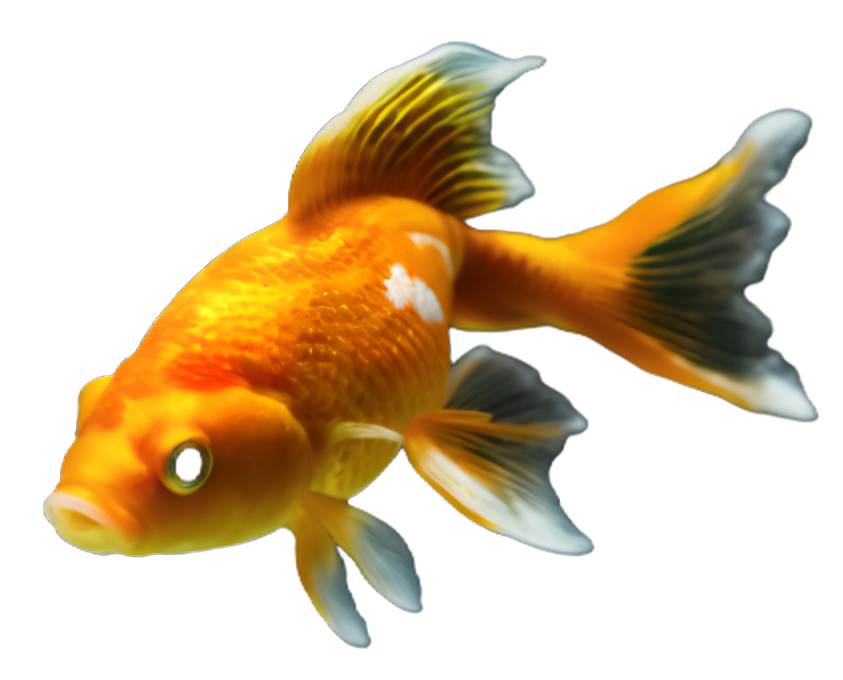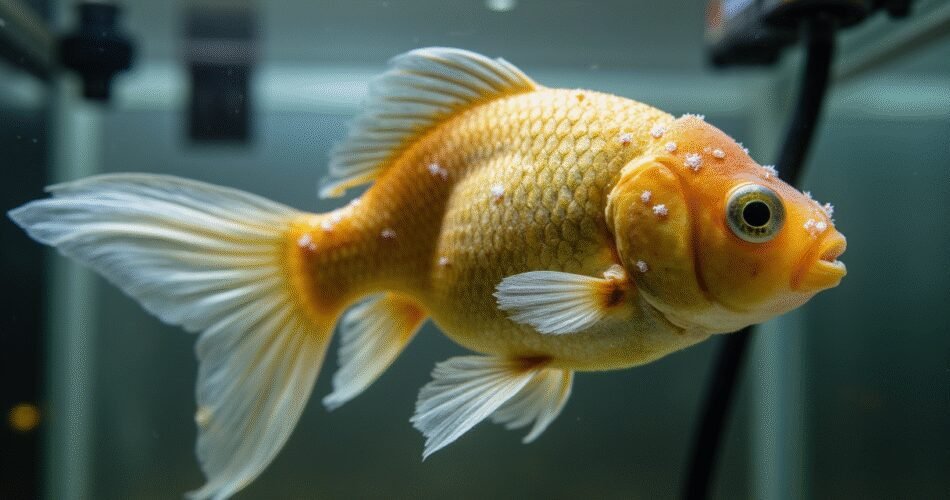Spotting Those Troublesome White Spots 🕵️♂️
I’ve been in your shoes—staring at my goldfish and noticing those tiny, salt-like specks dotting their fins, gills, or body. Let me tell you straight up: those are white spots on goldfish, and they’re a big red flag. I’m dealing with ich, one of the most common and pesky goldfish diseases out there. It’s not just a cosmetic issue; it’s caused by a nasty parasite called Ichthyophthirius multifiliis that burrows into my fish’s skin. I see them getting irritated, rubbing against objects (that’s called flashing), and even struggling to breathe. Ignoring this? Not an option. I’ve learned that stress from ich weakens their immune system, paving the way for secondary infections or worse. Acting fast is everything—this parasite multiplies like crazy, so early intervention saves my fish and stops a full-blown outbreak. Trust me, getting ahead of it is way easier than cleaning up the mess later.
What’s Really Going On with Ich 🧐
I’ve battled ich more times than I care to admit, so let me break it down for you. The root cause? A parasite sneaking into my tank through new fish, plants, or even contaminated gear. Stress is a huge trigger—poor water quality, sudden temperature swings, or overcrowding make my goldfish easy targets. Once it’s in, this thing spreads fast. I look for symptoms like those telltale white spots, my fish scratching against decor, or becoming lethargic with no appetite. Spotting these early is my secret weapon. If I see them, I jump into action with a solid treatment plan. It’s all about knowing the enemy and striking before it gets worse.
Understanding the Parasite’s Life Cycle 🔄
Getting a grip on the ich life cycle changed everything for me. It has stages: trophont (those visible white spots), tomont (a cyst stage), tomites (reproducing inside), and theronts (free-swimming and ready to infect). Knowing how ich reproduces on goldfish helps me time my attacks. I target the free-swimming theronts because that’s when meds work best. Miss that window, and the ich parasite just bounces back. Timing my treatments based on this cycle is what finally clears outbreaks for good. It’s like hitting the reset button on their health.
Figuring Out If It’s Really Ich 🔍
When I suspect ich, I don’t wait around. I look closely for those salt-like spots and watch for flashing—where my fish rub against stuff. Lethargy and loss of appetite are dead giveaways. I might even use a magnifying glass for a better view. While pros do skin scrapes for confirmation, I rely on consistent visual cues. Catching this early means I can start treatment fast, and that’s half the battle won. No second-guessing; if it looks like ich, I treat it like ich.
Setting Up a Safe Quarantine Space 🛡️
I never skip quarantining new or sick fish—it’s a non-negotiable rule. Isolating them early saves lives and protects my main tank. Here’s my go-to setup: a spare 10-gallon tank with dechlorinated water, a gentle filter, and a heater set to 78°F to speed up the ich lifecycle. I keep it bare—no substrate or decor—for easy cleaning. I dose with ich medication right away and monitor daily. The infected fish stays put until it’s symptom-free. This focused approach reduces stress and contains the problem. A little effort here prevents disasters down the line.
My Go-To Treatments That Actually Work 💊
Dealing with white spots stresses me out, but I’ve found treatments that deliver. For meds, I swear by products with formalin and malachite green—they’re effective and easy to find. I follow dosage instructions to a T and remove chemical filtration during treatment. Copper-based options are strong but require caution, especially with sensitive setups. On the natural side, salt baths help; I dissolve aquarium salt in a separate container for daily dips. Raising the water temperature a bit speeds up the life cycle, making treatments hit harder. I mix remedies with meds for the best results and stay consistent. Sticking to the plan and watching closely is key to turning things around.
Why Water Quality Is Everything 💧
I can’t overstate how vital water quality is, especially during an ich battle. Poor conditions stress my fish and invite parasites. That’s why improving water quality to treat ich is my top priority. I test parameters weekly—high ammonia or nitrites mean trouble. I do 25-30% water changes to keep things stable and ramp up cleaning: vacuuming substrate and wiping down surfaces to remove cysts. I boost aeration since meds can lower oxygen levels. Keeping water quality goldfish thrive in isn’t just preventive; it supports recovery. Consistency here makes all the difference.
Stopping Ich Before It Starts 🚫
After dealing with ich, I’m all about prevention. I quarantine new fish for at least two weeks to avoid introducing nasties. Keeping water pristine with weekly tests and changes reduces stress and keeps my goldfish resilient. I avoid temperature swings with a reliable heater and never overcrowd the tank. A balanced diet rounds it out. Staying proactive with these habits saves me from repeat outbreaks. It’s straightforward: good care keeps ich at bay.
Tracking Recovery and Knowing When to Call for Help 📈
Watching for ich recovery signs keeps me on track. I look for active swimming, normal appetite, and fading white spots. If my fish stays energetic post-treatment, I know we’re winning. But if spots linger, breathing gets rapid, or secondary issues pop up, I don’t hesitate—it’s time for consulting an aquarist or vet for ich treatment. Knowing when to see a vet for ich is crucial; waiting risks everything. When in doubt, I seek help fast—it’s a lifesaver.
Wrapping It All Up 🎯
I’ve walked you through everything from spotting white spots to a clear summary of ich treatment steps. Acting quickly is non-negotiable; delay risks my goldfish’s health. Consistent water changes, proper meds, and vigilant monitoring are my foundation. These final thoughts on treating ich on goldfish come from hard-won experience: timely care saves lives. Stay sharp, and your fish will thank you.

